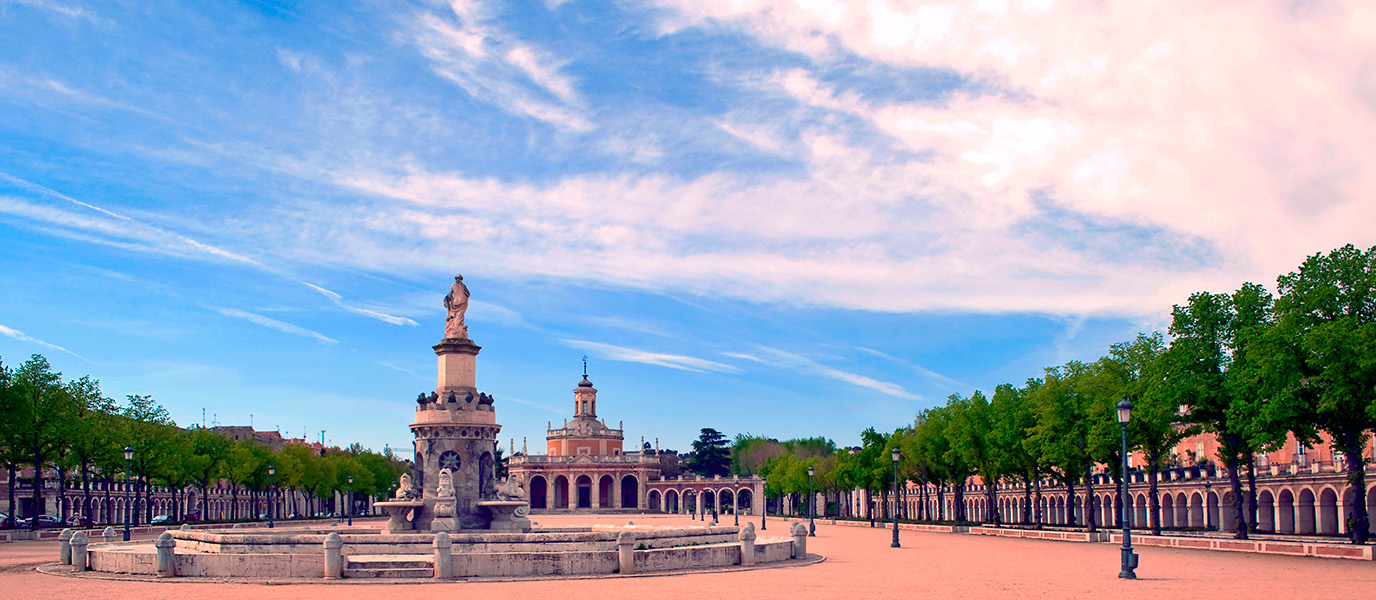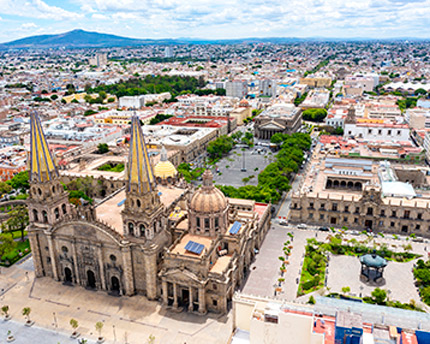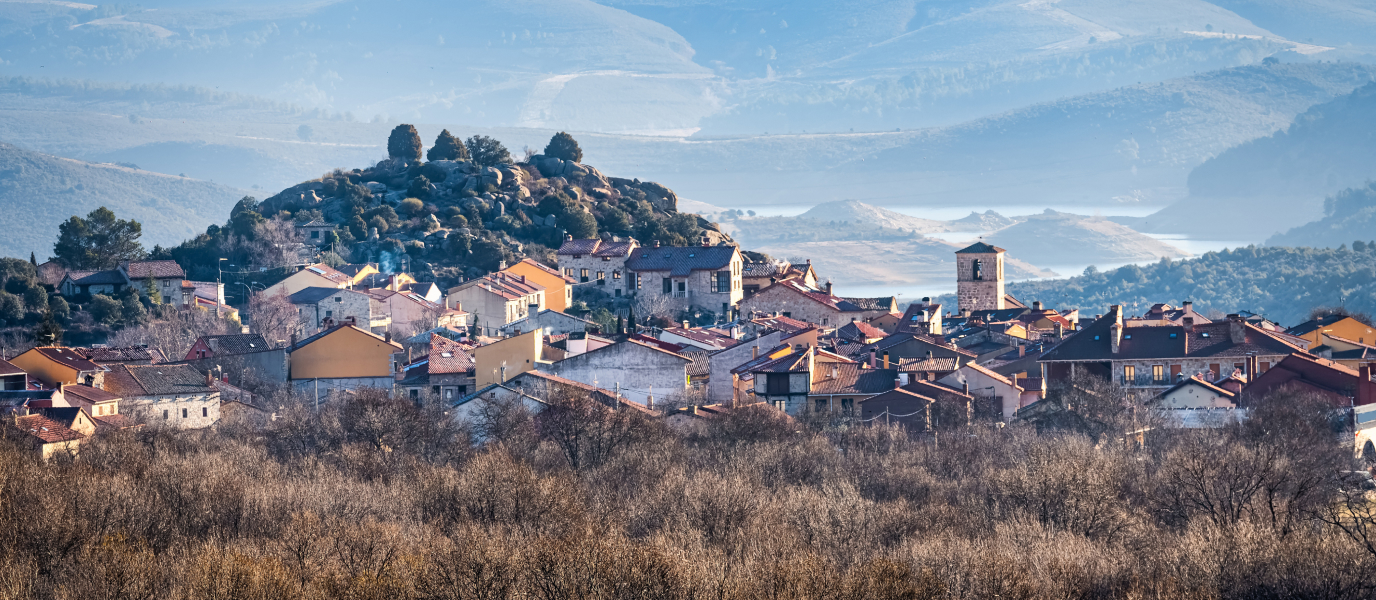The Real Sitio y Villa de Aranjuez, situated between the Tagus and Jarama rivers, is a must-visit destination. Together with Segovia, La Granja, El Escorial and Alcalá de Henares, it is one of the most interesting places to visit at just a short distance from Madrid with excellent transport links.
Situated 42 kilometres away from Madrid, Aranjuez exudes history, nature and art. It boasts many sights and monuments, as well as a magnificent natural environment and numerous leisure options. It even has a tourist train that departs from Madrid to Aranjuez, known as the Tren de la Fresa [Strawberry Train], with a dramatised tour included.
The most eye-catching part of the Real Sitio de Aranjuez is that occupied by the palace and gardens built on the banks of the Tagus at the request of King Philip II. The monarch restructured the estate, which during the Middle Ages had been owned by the Order of Santiago where its Grand Master had built a small residence in the fourteenth century.
A visit to Aranjuez is well worth it even just to see the Royal Palace and its gardens, which dazzle and delight visitors. It was therefore no wonder that the cultural landscape of Aranjuez was declared a UNESCO World Heritage Site in 2001.
Below is a list of the places of interest that cannot be missed on a visit to Aranjuez:
The Royal Palace
The emblem of Aranjuez was initiated by King Philip II and continued by King Philip V and Charles III, built around a square courtyard known as the Plaza de Armas. Its charms are many, but it is best to start with the main staircase, by Bonavía, with its forged iron balustrade in Rococo style and the impressive and ostentatious Porcelain Room. The Moorish Room is inspired by the Alhambra and precedes the spectacular Throne Room and the Palace Chapel, designed by Francisco Sabatini. You will also be able to see the bedrooms of Queen Isabella II and the King with their original furniture. Following on from that is the Room of Mirrors, the Formal Dining Room and the Queen’s Room, where there is an English piano given to Isabella II as a gift from the empress Eugénie de Montijo.
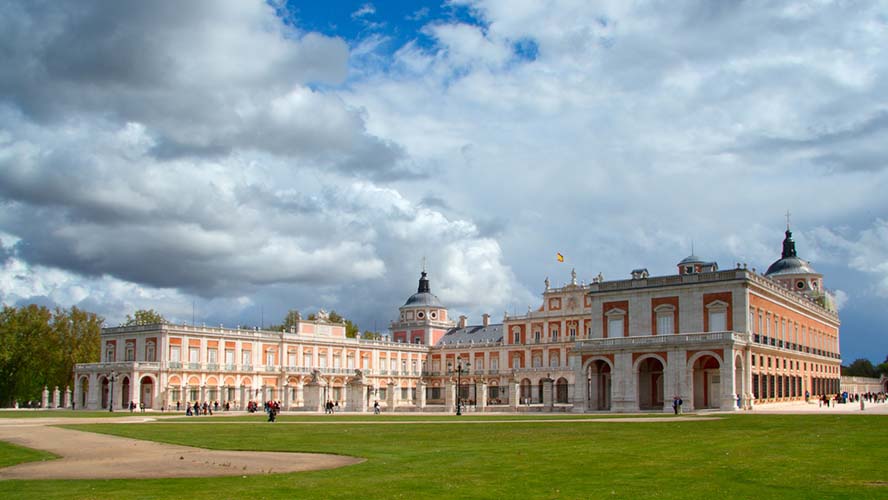
The Island Garden
The largest of all of the garden spaces, it dates back to the Masters of Santiago and was remodelled by the architect of Philip II, Juan Bautista de Toledo. It takes its name from its location, surrounded by the waters of the Tagus river. The garden is brimming with fountains, the most spectacular of which is the Fountain of Hercules and Hydra, which is surrounded by marble sculptures, and the Fountain of the Boy with Thorn, which takes its name from its central figure. They are followed by more fountains dedicated to Apollo and Bacchus and, finally, the Fountain of the Chemist and the Children.
The New Garden or the Parterre
Built by order of King Philip V in 1728, this French garden is flanked by a stone moat and iron railings with stone pedestals. Of particular note is the Fountain of Ceres and that of the Nereids, however the most striking is the Fountain of Hercules and Antaeus.
The King’s Garden
In 1622, King Philip IV added a significant collection of sculptures to this Italian garden, including that of Philip II, by Pompeo Leoni, and the bas-reliefs of Charles V and the empress Isabella. Since 1733 it has been connected to the Parterre Garden.
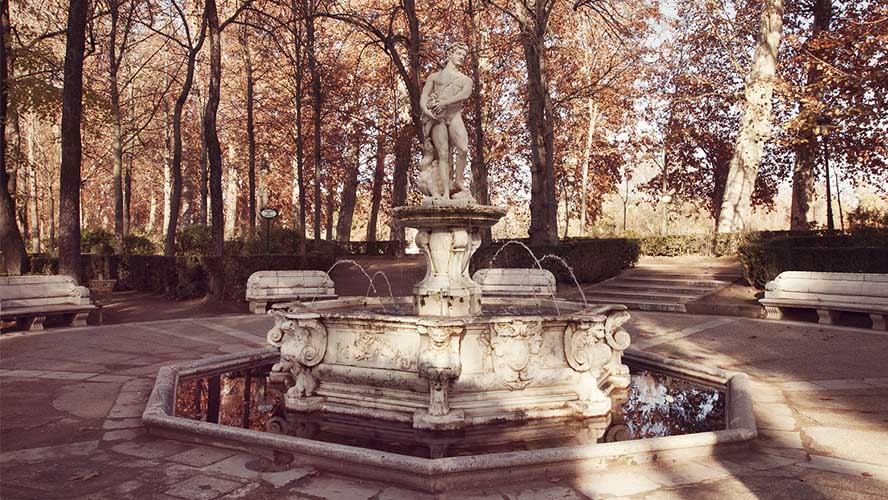
The Prince’s Garden
Spanning 145 hectares, this is the most modern garden dating from the late eighteenth century. Three of its gates are by Juan de Villanueva. Of particular note is the Fountain of Apollo, which came from La Granja de San Ildefonso, and the Fountain of Narcissus. Don’t leave without visiting the fish pond and the Chinese Pavilion.
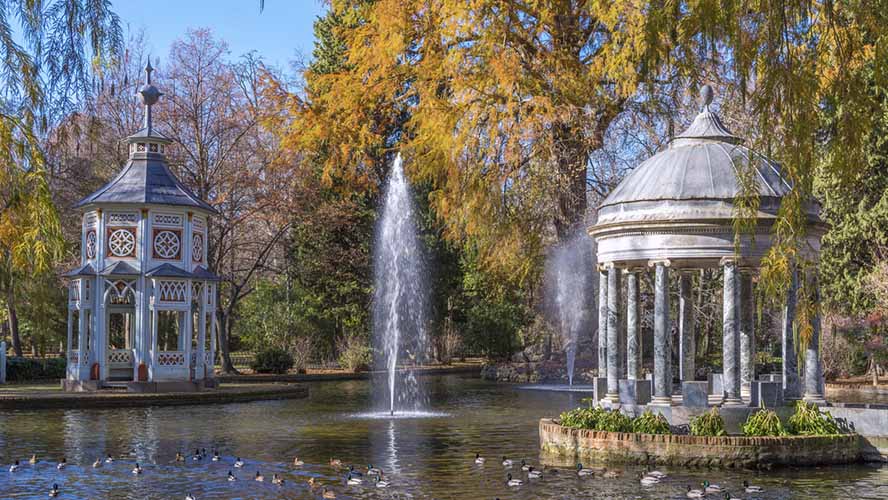
The Garden of Isabella II
Situated on one side of Plaza de San Antonio, this garden lies on the threshold between the palace complex and the city centre of Aranjuez. Created between 1830 and 1843, it is one of the first gardens designed for public space in Spain. In the middle of it stands a bronze statue of Queen Isabella II as a child.
Museo de la Vida [Museum of Life]
In 1997, this museum was opened within the Royal Palace of Aranjuez in which the ceremonial mantle of Queen Victoria Eugenie and the wedding dress of Letizia Ortiz, designed by Pertegaz, can be seen. Also on display are the wedding dresses of Queen Sofía and the infantas Elena and Cristina.
Museo de Falúas Reales
Located in the Prince’s Garden, this museum was created between 1963 and 1966 to house, among other pieces, the cradles in which the princes and infantas of Spain were rocked to sleep, in addition to a gondola commissioned by Charles III to be used on the pond in Buen Retiro Park in Madrid.
Real Casa del Labrador
This small palace was designed by Juan de Villanueva between 1791 and 1803 by order of King Charles IV. Its interior stands out for its sumptuous decoration. The spectacular Gallery of Statues contains 10 busts of Roman emperors from Italy and its marble floor has six fragments of fourth-century Roman mosaics from Mérida embedded in it. Other magnificent spaces are the Platinum Room, the Billiard Room, the Room of Queen María Luisa and the Dance Hall, due to their decorative opulence.
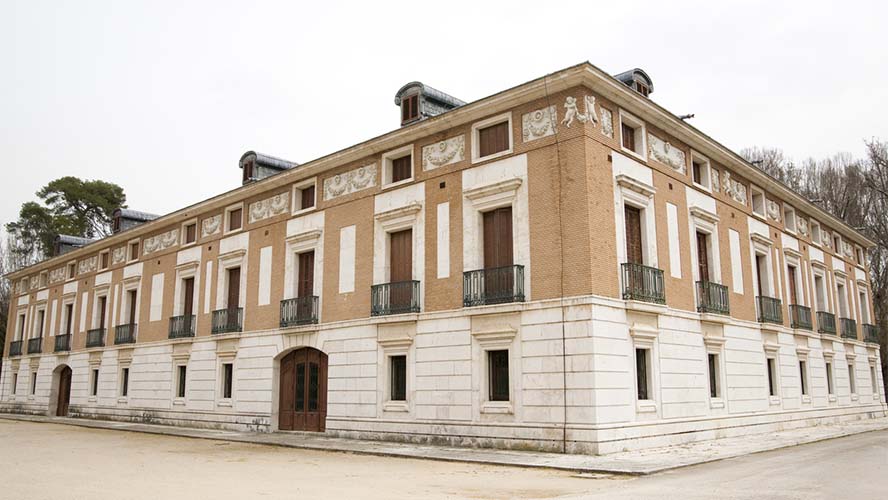
Casas de Oficios and Cuarto de Caballeros
These buildings housed, respectively, the staff who were responsible for taking care of the palace and the court’s entourage and ministers. The former dates from the sixteenth century whilst the latter was built in the eighteenth century.
More places to see in Aranjuez
Aranjuez also boasts other places of great interest, such as its two-centuries-old Plaza de Toros, built by order of Charles IV, and the Equestrian Society of Aranjuez. Another space worth visiting is the Isabel de Farnesio Cultural Centre, originally built as royal stables and then later used as a college for the orphans of servicemen, before becoming the important cultural centre and theatre that it is today. In terms of religious architecture, be sure to see the Church of San Antonio, which was originally a chapel built by order of Philip IV due to the small size of the chapel of the Royal Palace. Lastly, don’t miss the Royal Coliseum of Charles III, the oldest covered theatre in Spain, which dates back to 1766.
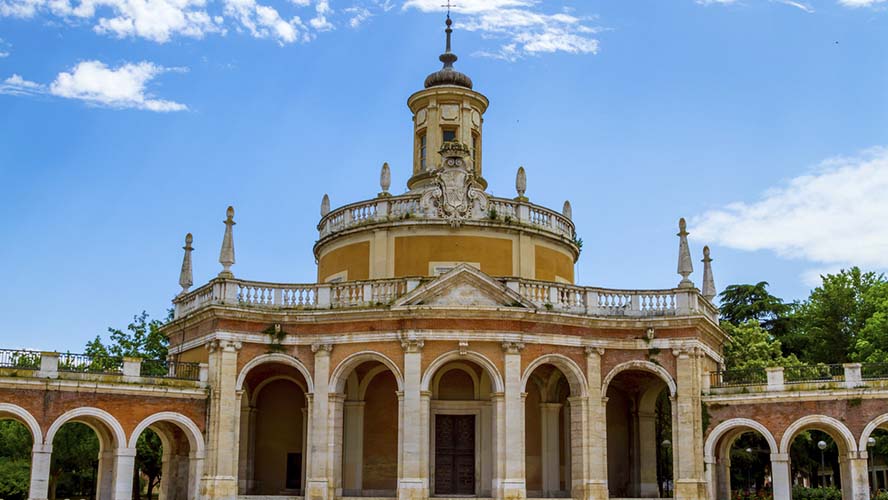
To conclude, below are three important milestones in the history of Aranjuez:
- In 1783, the Montgolfier brothers flew here the first, newly-invented hot air balloon, a feat that is remembered every year with a party known as ‘El Deleite’ [The Delight].
- In 1808, Aranjuez was the site of infamous mutiny against Manuel Godoy, then secretary of state of Charles IV. Today the event is marked by the Fiestas del Motín [Mutiny Festival].
- The first railway line to open in Madrid, the second on the Iberian Peninsula, connected Aranjuez with the capital in 1851. The route has been honoured since 1984 with the iconic Tren de la Fresa, called as such because passengers are offered strawberries during the journey. If you’re a big fan of trains, you can also take a ride on the Chiquitrén, the city’s tourist train, which allows you to discover the beauty of the historic centre and its royal gardens.




































































